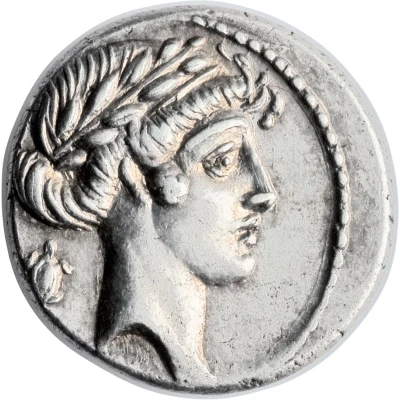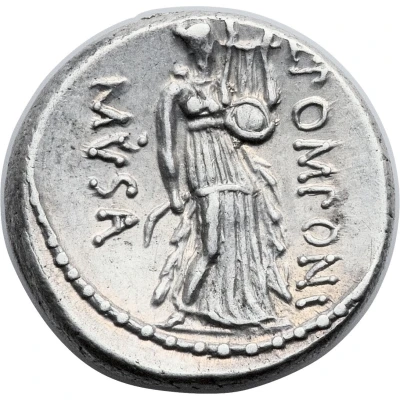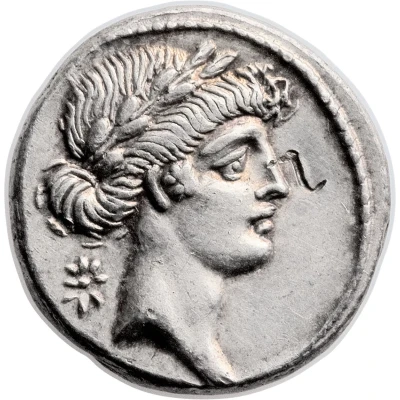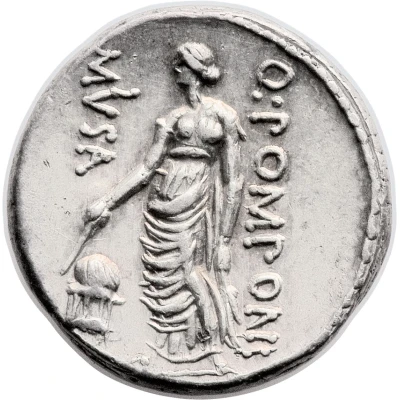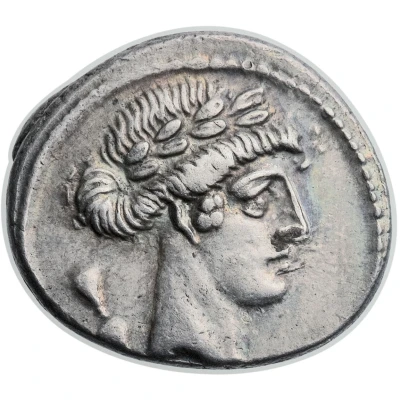
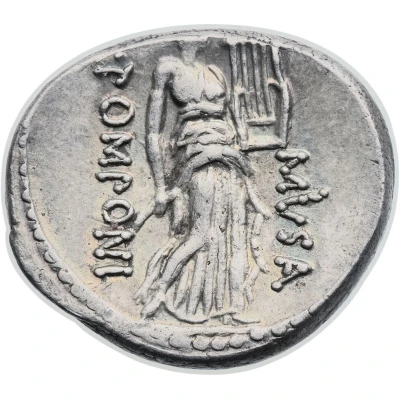

© Heritage Auctions
Denarius Pomponia: Quintus Pomponius Musa; Q•POMPONI MVSA; Terpsichore 66 BC
66 BC year| Silver | 3.69 g | 18 mm |
| Issuer | Rome › Roman Republic (509 BC - 27 BC) |
|---|---|
| Period | Republic (509 BC - 27 BC) |
| Type | Standard circulation coin |
| Year | 66 BC |
| Value | Denarius (1) |
| Currency | Denarius of 16 Asses (141 – 27 BC) |
| Composition | Silver |
| Weight | 3.69 g |
| Diameter | 18 mm |
| Shape | Round (irregular) |
| Technique | Hammered |
| Orientation | Variable alignment ↺ |
| Demonetized | Yes |
| Updated | 2024-10-06 |
| Numista | N#66716 |
|---|---|
| Rarity index | 100% |
Reverse
Terpsichore, the Muse of Dancing, standing right, holding plectrum with right hand and square lyre in left hand.
Moneyer mark in two parts downwards on either side.
Border of dots.
Script: Latin
Lettering:
Q•POMPONI
MVSA
Translation: Quintus Pomponius Musa
Edge
Plain
Comment
The gens Pomponia was a plebeian family at Rome throughout the period of the Republic and into imperial times. The first of the gens to achieve prominence was Marcus Pomponius, tribune of the plebs in 449 BC; the first who obtained the consulship was Manius Pomponius Matho in 233 BC.The moneyer Quintus Pomponius Musa plays on his name here by striking a 10-coins as a serie related to the myth of the Muses: 9 coins representing the 9 Muses along with one coin representing Hercules. Hercules is known in Greece, and as represented on this coin, as Hercules Musarum or Hercules Musageta, meaning Hercules, leader of the Muses.
Also known with inverted lettering i.e. Q•POMPONI on left and MVSA on right.
Interesting fact
The Denarius coin features an image of Terpsichore, the muse of dance and choral song, on its reverse side. This is notable because it's one of the earliest depictions of a muse on a Roman coin, and it highlights the importance of art and culture in Roman society during that time.
